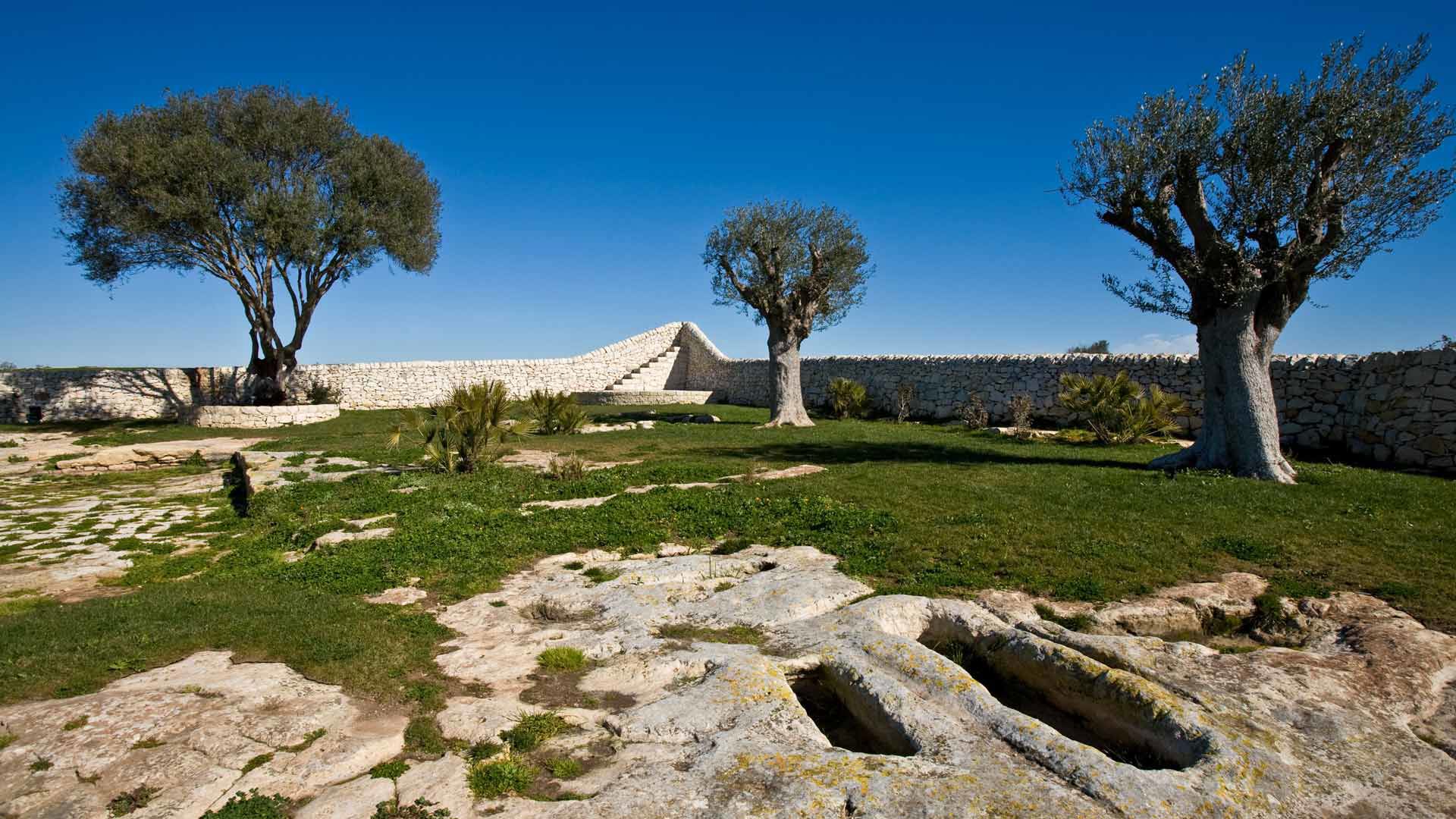The “Eremo della Giubiliana” (12th-14th century) is situated in the South of Ragusa were the Highlands are covered by carobs and slopes down gentle towards the sea; oppaite, the isles of Malta and the African coast, a horizon full of fascination and memory.
The estaet used to bepart of the old ecclesiastical Field of “Renna” (12th century), a former Arabic fortified structure (Rendet Gebuni) in which “Giubiliana” was a kind of hermitage and fortified “Baglio” in a dominant position over the coast as protection from the frequent raids of the Barbary pirates who, since the end of the 15th century had intensified their activity in the Mediterranean sea as privateers for the Turkish Empire.
The knights of the Order of St John, on the way to the Isle of Malta, used the structure of the Convent in the first Half of the 16th century; their presence has been documented in the recent restorations.
In the 18th century the hermitage was bought by the Nifosì’s family of the land aristocracy of the Highlands; and the last heir, Vincenza Iolanda Nifosì decided to start the restoration and to continue the old vocation, opening the estate to hospitality and running it personally.


The diffused presence of agricultural settlements in the highlands is documented since the V cent. B:C: during the Greek and Greek – Siculi (Siceliota) ages.
These rural sites were built even in form of small villages but more often as isolated farms which were subsequently fortified by the Romans and during the Byzantine age following the incoming threat of the Arabs (the Arab invasion took place in the 844-845).
Built in the megalithic way with heavy blocks of hard limestone, the fortified farm was afterwards included in the medieval structure of the “Eremo” and only small remains still survive in a side of the tower and in a “hypogeum”(hiding-place to conceal the hard wheat) of the Roman period (II cent. A.C.) discovered during the restoration work underneath one of the arches of the main court.
The “necropolis”, that is similar to others documented sites, shows seven “box” tombs, dug in the hard limestone and covered initially with stonelabs; the tombs were protected from rain by small strains dug in the stone and still visible today.
Th necropolis, exceptionally well-preserved, in 1982 was studied and surveyed by the “Soprintendenza di Ragusa” directed by Dr. Giovanni Distefano who discovered many remains and artifacts in form of ceramic pottery, bronze jewel and necklace of vitreaous paste, belonging this last from tomb 1, certainly the burial furnishing of a woman.
The archeological remains will be displayed in the nearby “Antiquarium”.

When my son asked me to open the Eremo to hospitality, he said to convince me that our family has always hosted our guests.
I objected that all those who had been admitted to the privacy of Eremo were friends of us. The answer was that once at the Eremo all our guests would have become our friends. Now that Eremo has had this unexpected success, I must recognize that he was right…
Eremo della Giubiliana
28 October 1997

